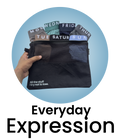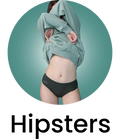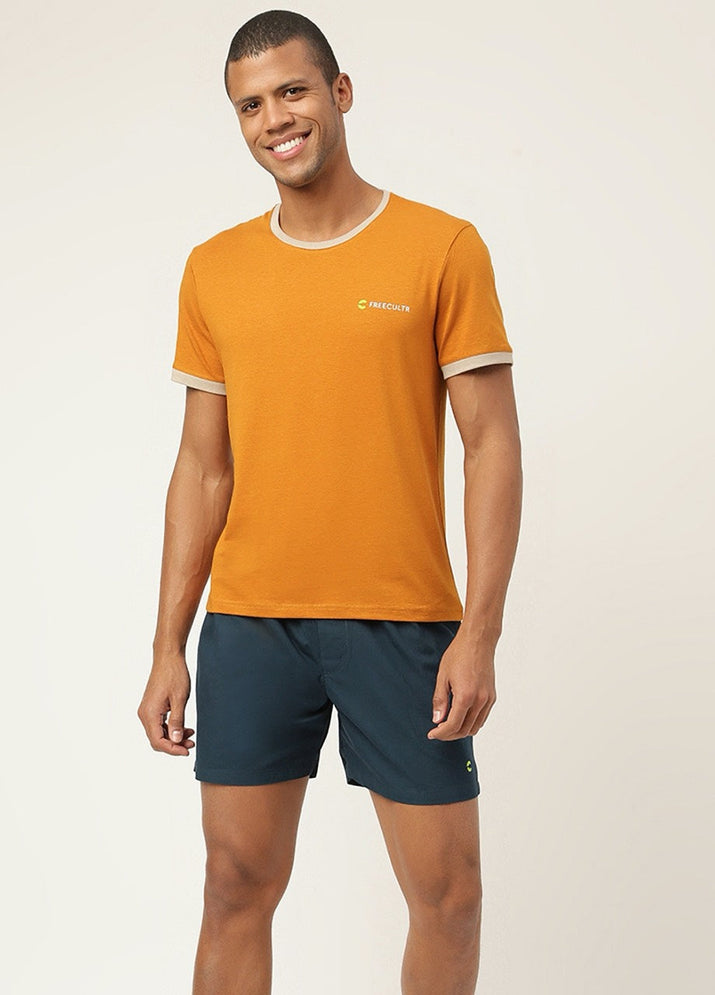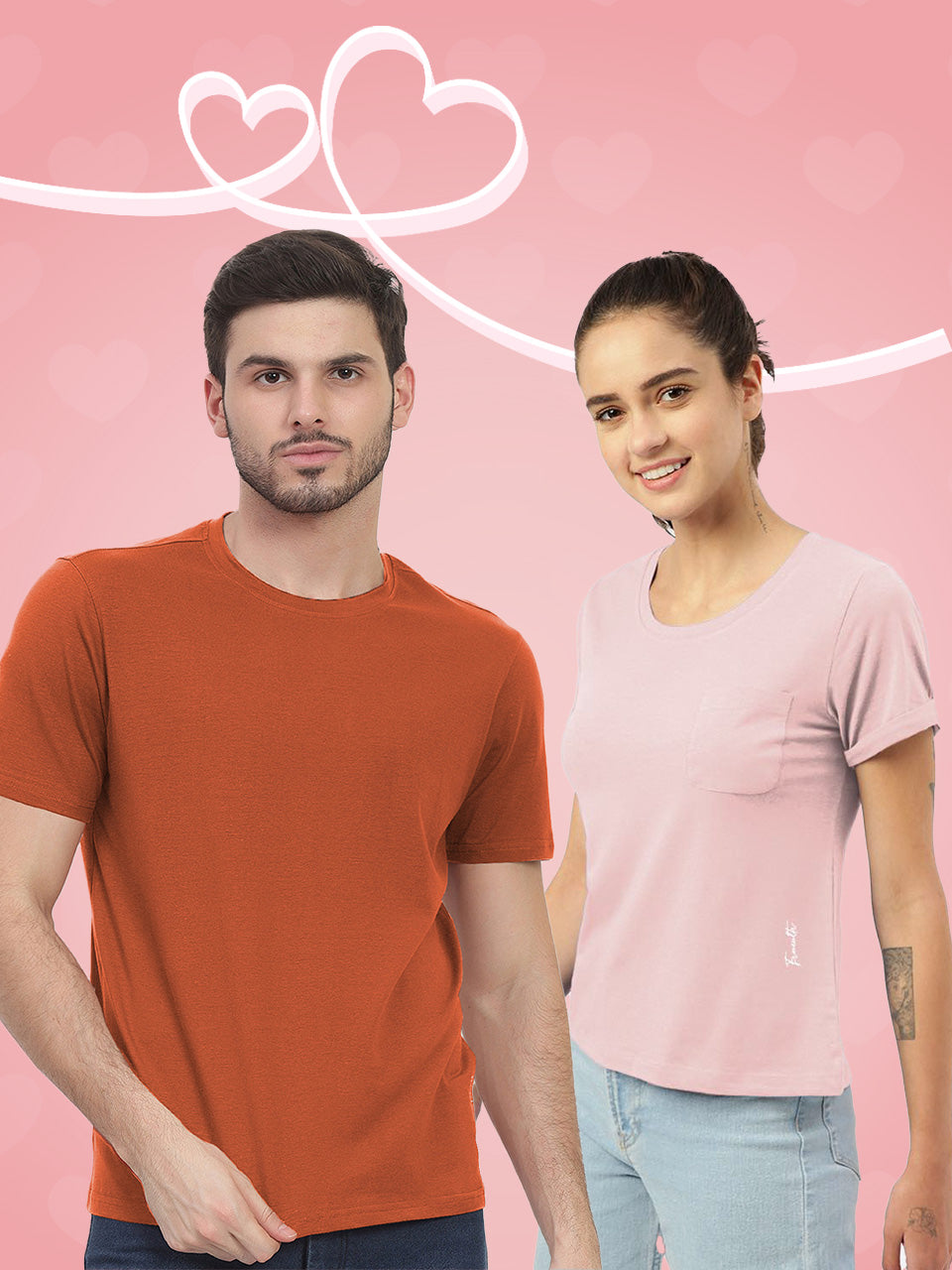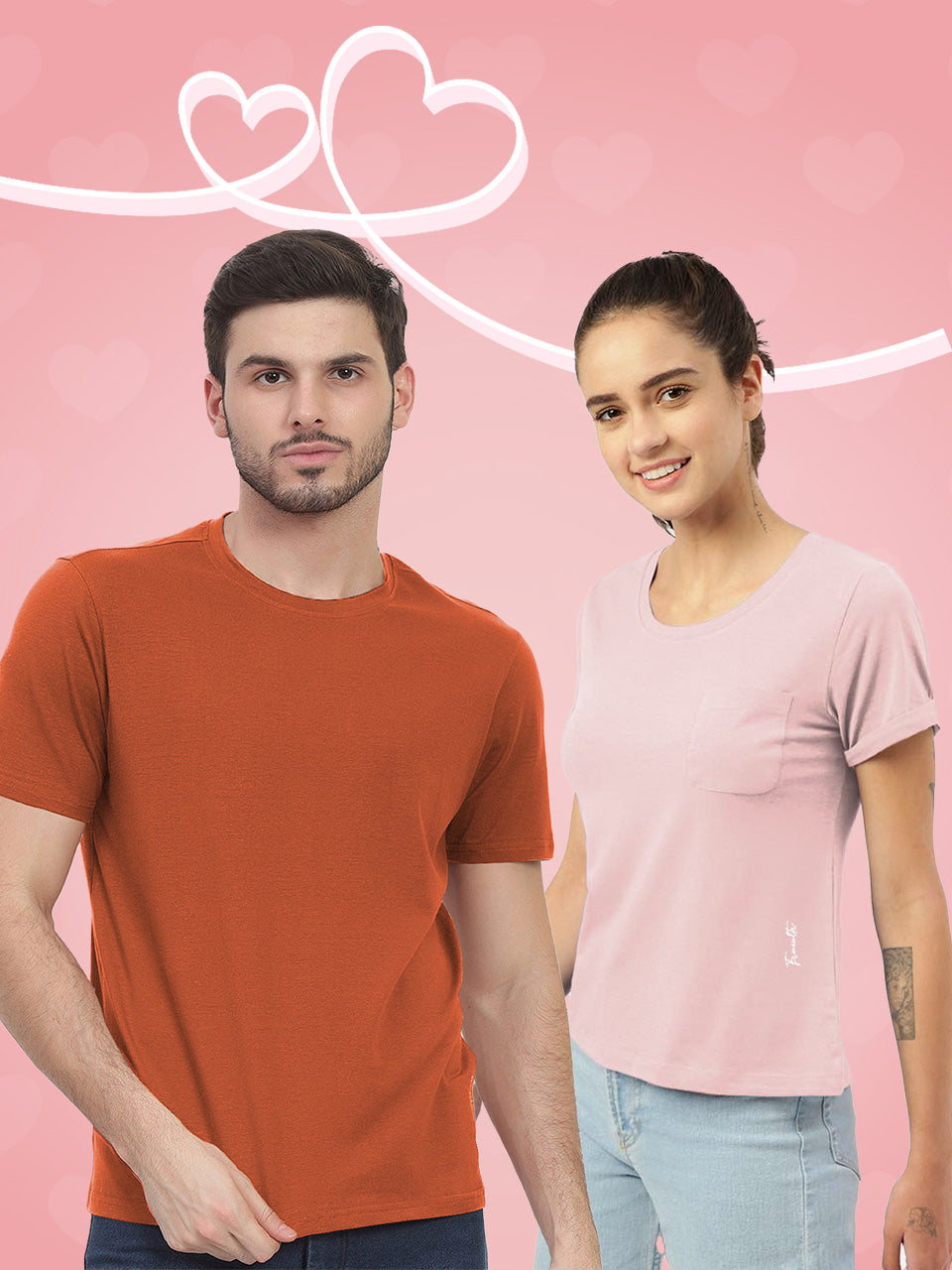Modern tees transcend simple garments, evolving into highly engineered apparel that prioritizes both effortless style and advanced breathability. Innovations in fabric technology, from ultra-soft organic Pima cotton to moisture-wicking bamboo blends and recycled polyester performance knits, redefine comfort. These materials facilitate superior airflow and thermal regulation, making them ideal for dynamic lifestyles and diverse climates. Unlike traditional heavier fabrics, contemporary tees offer a lightweight drape and natural stretch, fitting seamlessly into current minimalist and athleisure trends. This technical refinement ensures maximum comfort and versatility, establishing tees as foundational elements for a truly adaptable and fashion-forward wardrobe.

The Enduring Appeal of Tees: A Foundation of Modern Fashion
In the vast landscape of global fashion, few garments hold as universal and enduring an appeal as the humble tee. More than just a simple piece of clothing, tees have become a cornerstone of our wardrobes, embodying effortlessness, comfort. Versatile style. At its core, a tee, or T-shirt, is a type of shirt named for its T-shape body and sleeves. Traditionally collarless and short-sleeved, it's typically made of a stretchy, light. Inexpensive fabric and is easy to clean. Its journey from an undergarment to a standalone fashion statement is a testament to its adaptability and democratic nature. The widespread adoption of tees speaks volumes about their functionality and how they seamlessly blend into almost any lifestyle, from the high-fashion runway to the casual street style.
The Evolution of Tees: From Undergarment to Iconic Statement
The history of tees is surprisingly rich and transformative. Initially, these garments emerged in the late 19th century as practical undergarments, worn by laborers, miners. Servicemen for their comfort and ease of movement. The U. S. Navy notably adopted them as standard issue undershirts in 1913. It wasn't until the mid-20th century that tees began to shed their 'underwear' label and step into the limelight as outerwear. Hollywood played a significant role in this transition; iconic actors like Marlon Brando in "A Streetcar Named Desire" (1951) and James Dean in "Rebel Without a Cause" (1955) famously popularized the plain white tee, imbuing it with a rebellious and effortlessly cool image. This marked a pivotal shift, transforming tees into symbols of youth culture and casual rebellion. Over the decades, tees have continued to evolve, becoming canvases for self-expression through graphic prints, band logos, political messages. Artistic designs. Today, tees are recognized not just for their comfort but as a fundamental element of personal style, adaptable to countless aesthetic expressions.
Materials Matter: The Science Behind Breathability and Comfort in Tees
The true magic of tees lies in their fabric composition, which dictates their comfort, drape. Most importantly, their breathability. Understanding the properties of different materials is key to appreciating why certain tees feel better than others, especially in varying climates or for specific activities. The choice of fabric directly impacts how a tee performs, whether it's wicking away sweat during a workout or keeping you cool on a summer day.
Natural Fibers: The Foundation of Comfort
- Cotton The undisputed king of tee fabrics, cotton is celebrated for its softness, breathability. Absorbency. Different grades offer varying levels of luxury and durability:
- Pima Cotton Known for its extra-long staple fibers, Pima cotton produces incredibly soft, durable. Wrinkle-resistant tees. It's often found in premium tees.
- Supima Cotton An American-grown variety of Pima cotton, Supima offers superior strength, softness. Color retention compared to conventional cotton.
- Organic Cotton Grown without synthetic pesticides, herbicides, or GMOs, organic cotton is an environmentally friendlier choice. Tees made from organic cotton are often softer and hypoallergenic.
- Linen Derived from the flax plant, linen is renowned for its exceptional breathability and moisture-wicking properties, making it ideal for hot climates. Linen tees have a distinctive texture and a relaxed, slightly crinkled look.
- Bamboo A relatively newer player, bamboo fabric is incredibly soft, naturally antibacterial. Highly breathable. Tees made from bamboo often have a silky drape and excellent moisture absorption.
Synthetic and Regenerated Fibers: Engineered for Performance
- Polyester While not as breathable as natural fibers in its pure form, polyester is highly durable, resistant to shrinking and stretching. Excellent at wicking moisture. It's a staple in athletic tees where performance is paramount.
- Rayon (Viscose) A regenerated cellulose fiber, rayon offers a silky feel and good drape. It's absorbent and breathable, making it comfortable in warm weather, though it can wrinkle easily.
- Modal A type of rayon made from beechwood pulp, Modal is exceptionally soft, smooth. Resistant to shrinking and fading. It’s often blended with cotton for added softness and drape in tees.
- Lyocell (Tencel) Another regenerated fiber, Lyocell is known for its incredible softness, strength. Environmental sustainability (often produced in a closed-loop system). Tees made from Lyocell are highly breathable, moisture-wicking. Have a beautiful drape.
Blends: The Best of Both Worlds
Many tees utilize fabric blends to combine the best attributes of different fibers. For instance, a cotton-polyester blend offers the softness of cotton with the durability and moisture-wicking capabilities of polyester. A rayon-spandex blend provides excellent drape and stretch, perfect for tees that need to move with the body. These engineered fabrics allow for a nuanced approach to comfort and performance, ensuring there are tees tailored for every need and preference.
Here's a quick comparison of common tee fabrics:
| Fabric Type | Key Characteristics | Breathability | Moisture-Wicking | Common Use Case for Tees |
|---|---|---|---|---|
| Cotton | Soft, absorbent, durable | High | Moderate | Everyday wear, casual |
| Linen | Lightweight, crisp, textured | Very High | High | Warm weather, relaxed style |
| Bamboo | Silky soft, antibacterial | High | High | Comfort wear, loungewear |
| Polyester | Durable, wrinkle-resistant, quick-drying | Moderate (improves with blends) | Very High | Athletic, performance tees |
| Modal/Lyocell | Very soft, smooth, good drape | High | High | Premium casual, comfortable everyday |
Design and Fit: Tailoring Your Tee Experience
Beyond fabric, the design and fit of tees significantly influence their aesthetic and how they feel on the body. The subtle differences in neckline, sleeve length. Overall cut can transform a tee from a basic garment into a sophisticated fashion statement or a specialized piece of athletic gear. Understanding these elements empowers you to choose tees that not only fit well but also align with your personal style and intended use.
Necklines: Defining the Frame
- Crew Neck The classic, round neckline that sits close to the base of the neck. It's universally flattering and ideal for a clean, traditional look, often used for graphic tees or as a layering piece.
- V-Neck Features a V-shaped neckline that can vary in depth. It elongates the neck and offers a more open, casual feel, often preferred for a less restrictive fit or to showcase a necklace.
- Scoop Neck A wider, more rounded neckline than the crew, dipping lower on the chest. It's often seen in women's tees, offering a relaxed and feminine touch.
- Boat Neck A wide, shallow neckline that runs horizontally, nearly shoulder-to-shoulder. It's elegant and sophisticated, commonly found in more fashion-forward tees.
Sleeve Lengths: From Practical to Fashion-Forward
- Short Sleeve The most common length, ending typically mid-bicep. Versatile for all seasons and activities.
- Long Sleeve Extending to the wrist, offering warmth and sun protection. Ideal for cooler weather or layering.
- 3/4 Sleeve Ends between the elbow and the wrist. Offers a stylish, often relaxed look.
Fits: Sculpting the Silhouette
- Regular/Classic Fit Offers a comfortable, relaxed fit that isn't too tight or too loose. It's the standard, versatile choice for most body types.
- Slim Fit Tapered through the body and sleeves, offering a more tailored and contemporary silhouette. It accentuates the physique and is popular for a modern, sleek look.
- Oversized/Relaxed Fit Features a looser, more generous cut for a laid-back, street-style aesthetic. Often chosen for comfort and a fashion-forward statement.
- Athletic Fit Designed with performance in mind, often featuring stretch fabrics, raglan sleeves for enhanced mobility. Moisture-wicking properties. These tees are often more fitted around the chest and arms but allow for full range of motion.
The construction of tees also plays a role. Flatlock seams reduce chafing, especially in activewear. Fabric weight (measured in GSM - grams per square meter) dictates a tee's drape and warmth; heavier tees are more substantial, while lighter ones are airier.
Tees for Every Occasion: Real-World Applications
The sheer versatility of tees is perhaps their greatest strength. They are not confined to a single wardrobe category but seamlessly transition across various settings, adapting to different dress codes and personal expressions. From the gym to a dinner date, there's a tee designed to fit the bill.
- Casual Everyday Wear This is the natural habitat for most tees. A well-fitting cotton tee paired with jeans or shorts is the epitome of effortless cool. Think of a sunny Saturday afternoon, running errands or meeting friends for coffee – a simple, comfortable tee is the go-to. My personal experience has always been that a perfectly broken-in vintage-style tee is my favorite for maximum comfort on a lazy Sunday.
- Athletic and Performance Wear Modern performance tees are engineered with advanced synthetic blends (like polyester and spandex) that excel in moisture-wicking and breathability. These tees are designed to keep you dry and comfortable during intense workouts, running, or any physical activity. They often feature strategic ventilation zones and anti-odor technologies. For example, a runner might choose a lightweight, quick-drying polyester tee for a marathon, whereas a yogi might opt for a soft, stretchy Modal blend.
- Layering Essential Tees serve as an excellent base layer under shirts, sweaters, hoodies, or jackets. A plain white or black tee can provide warmth without bulk, protect your outer garments from sweat, or simply add a clean foundation to an outfit. This utility is particularly evident in transitional seasons where adaptable layering is key.
- Smart Casual Elevation With the right fabric and fit, tees can be dressed up for smart casual settings. A premium quality, well-fitting tee (perhaps a Pima cotton V-neck) worn under a blazer with chinos or tailored trousers can create a sophisticated yet relaxed look. This trend reflects the ongoing shift towards more comfortable yet polished attire in professional and social environments.
- Statement and Customization Graphic tees, band tees. Promotional tees are powerful tools for self-expression and branding. They allow individuals to showcase their interests, support causes, or simply wear art. Brands also widely use tees for merchandise and promotional giveaways due to their universal appeal and cost-effectiveness. The ability to customize tees with screen printing, embroidery, or direct-to-garment printing has made them a popular choice for personal gifts, team uniforms. Marketing campaigns.
The adaptability of tees makes them indispensable. They are the sartorial equivalent of a Swiss Army knife – simple in concept, yet endlessly useful and versatile.
Sustainable Tees: A Growing Trend Towards Conscious Fashion
As consumers become more aware of the environmental and social impact of the fashion industry, the demand for sustainable tees has surged. This movement focuses on minimizing harm throughout the production lifecycle, from raw material sourcing to manufacturing processes. Choosing sustainable tees is an actionable step individuals can take to support ethical practices and reduce their ecological footprint.
Key Aspects of Sustainable Tees:
- Organic Materials Tees made from organic cotton, bamboo, or linen ensure that the fibers are grown without harmful pesticides, synthetic fertilizers, or genetically modified organisms (GMOs). This protects soil health, water quality. The well-being of farmers.
- Recycled Materials Tees made from recycled polyester (RPET), often sourced from plastic bottles, or recycled cotton help reduce waste and conserve resources. This innovation transforms post-consumer waste into new, wearable fabrics.
- Ethical Production Sustainable tees are often produced in factories that adhere to fair labor practices, ensuring safe working conditions, fair wages. No child labor. Transparency in the supply chain is a hallmark of ethical brands.
- Reduced Water and Energy Consumption Innovative dyeing techniques and manufacturing processes are being developed to significantly lower water and energy usage during production. For instance, some companies use technologies that require vastly less water than traditional dyeing methods.
- Certifications Look for certifications that verify sustainable practices.
- Global Organic Textile Standard (GOTS) This is a leading standard for organic fibers, ensuring environmental and social criteria are met throughout the entire textile supply chain. If a tee is GOTS-certified, it means the cotton is organic and the production process is environmentally and socially responsible.
- Oeko-Tex Standard 100 This certification ensures that no harmful substances are present in the final product, covering all stages of textile production. While not directly about organic farming, it guarantees the safety of the garment against human skin.
- Fair Trade Certified This certification focuses on fair wages, safe working conditions. Community development for farmers and factory workers.
Supporting brands that prioritize these aspects contributes to a more responsible fashion ecosystem. For example, Patagonia, a well-known outdoor apparel company, has been a leader in using organic cotton and recycled materials in their tees and other garments, demonstrating a long-standing commitment to environmental stewardship.
Caring for Your Tees: Longevity and Maintenance
Proper care is essential to extending the life of your tees, maintaining their shape, color. Fabric integrity. While care instructions vary by fabric type, a few general guidelines can help ensure your favorite tees remain a staple in your wardrobe for years to come.
- Read the Label Always check the care tag for specific washing, drying. Ironing instructions. This is the most crucial step, as different fabrics require different approaches.
- Wash Cold For most tees, washing in cold water is recommended. Cold water helps prevent shrinking, fading. Preserves the fabric's fibers, especially for cotton and blends. It also saves energy.
- Gentle Cycle Use a gentle cycle to minimize wear and tear on the fabric, especially for delicate materials like Modal or Lyocell, or tees with intricate graphics.
- Turn Inside Out Before washing, turn your tees inside out. This protects any prints, embroidery, or delicate outer surfaces from friction during the wash cycle and helps prevent pilling (small balls of fiber that form on the surface of fabric).
- Avoid Overloading Don't cram too many tees into the washing machine. Overloading can prevent proper cleaning and increase friction, leading to damage.
- Choose the Right Detergent Use a mild detergent. Avoid harsh chemicals or excessive bleach, which can weaken fibers and cause discoloration.
- Drying Smarter
- Air Dry (Recommended) Lay tees flat or hang them on a hanger to air dry. This is the gentlest method, preventing shrinking, fading. Damage from heat. It's particularly good for tees made from natural fibers or those with prints.
- Low Heat Tumble Dry If using a dryer, opt for a low heat setting. High heat can cause shrinking (especially with cotton tees) and can damage elastic fibers or prints. Remove tees promptly to minimize wrinkles.
- Storage Fold tees neatly to prevent stretching or creasing. For delicate or premium tees, consider rolling them to maintain their shape.
By following these simple care tips, you can significantly extend the lifespan of your tees, keeping them looking fresh and feeling comfortable, proving that true effortless fashion also involves a little mindful maintenance.
Conclusion
Ultimately, the humble tee transcends its basic reputation, serving as the cornerstone of effortless fashion and breathable comfort. My personal tip? Don't just grab any tee; consider the fabric and fit. For instance, the rise of elevated cotton blends, often highlighted in recent trend reports on casual luxury, genuinely makes a difference – a well-draped Pima cotton tee feels incredibly soft and holds its shape, unlike cheaper alternatives. Embrace the tee as your stylistic foundation. Experiment by layering a crisp white tee under an open linen shirt for a relaxed summer vibe, or pairing a classic black tee with tailored trousers and a blazer for an instant smart-casual upgrade, a look frequently seen dominating current street style. The tee offers unparalleled versatility, allowing you to transition seamlessly from a casual weekend outing to an unexpected evening event with the right accessories. It's more than just a garment; it's a testament to refined simplicity. So, go forth and rediscover the transformative power of a truly great tee; it's the easiest way to elevate your everyday. For more on fabric innovations, consider exploring resources like Fashion United.More Articles
Mastering the Art of Layering: A Guide to Stylish DepthAccessorize It Right: The Finishing Touches That Transform Your Look
Sustainable Style: Making Eco-Conscious Fashion Choices
The Power of a Perfect Fit: Why Tailoring Matters
The Capsule Wardrobe: Simplifying Your Style, Maximizing Your Options
FAQs
What makes these tees so easy to style?
Our tees are designed with versatility in mind! Their classic cuts and clean lines mean they pair perfectly with anything from your favorite jeans to a sharp blazer, making effortless outfits a breeze for any occasion.
What kind of fabric are these tees made from to be so breathable?
We use premium, lightweight fabrics like high-quality cotton blends and modal. These materials are chosen specifically for their natural breathability, moisture-wicking properties. Incredibly soft feel, keeping you cool and comfortable all day long.
Are they comfortable for all-day wear?
Absolutely! Comfort is a top priority. Beyond just breathable fabrics, our tees feature a relaxed yet flattering fit that allows for maximum movement and comfort, so you'll feel great no matter what your day brings.
How do I find the right size and fit?
We offer a wide range of sizes from XS to XXL. You can find a detailed size chart on each product page with measurements to help you pick your perfect fit. Our designs generally offer a comfortable, true-to-size relaxed fit.
How should I wash and care for my new tee?
To keep your tee looking its best, we recommend machine washing cold with like colors and tumble drying on low. Avoid bleach. Iron on a low setting if needed. These simple steps will help maintain its softness and shape for a long time.
Can I wear these tees for different occasions?
Definitely! That's the beauty of effortless fashion. Our tees are perfect for lounging at home, a casual day out, layering under a jacket for a smart-casual look, or even dressed up with accessories for an evening out. They're incredibly versatile.
What makes these tees different from others on the market?
It's the perfect blend of style and comfort. We focus on premium, breathable fabrics paired with timeless designs and a flattering fit. You get a tee that not only looks great but feels amazing to wear, offering a truly effortless and comfortable fashion experience.

